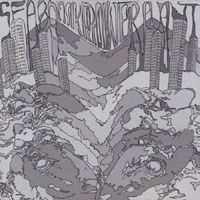Scott Morrow is ALARM’s music editor. Patrick Hajduch is a very important lawyer. Each week they debate the merits of a different album.
 Seabrook Power Plant: II (Loyal Label, 4/26/11)
Seabrook Power Plant: II (Loyal Label, 4/26/11)
Seabrook Power Plant: “Lamborghini Helicopter”
[audio:https://alarm-magazine.com/wp-content/uploads/2011/07/Seabrook_Power_Plant_Lamborghini_Helicopter.mp3|titles=Seabrook Power Plant: “Lamborghini Helicopter”]Morrow: Using a banjo and upright bass as key instruments in a math-prog power trio, Seabrook Power Plant offers one hell of an alternative to the “nuclear family” of the traditional rock lineup.
Electric guitar, electric bass, and assorted effects each play major roles, and at times, the group comes closer to the shredding avant-rock of “regular” experimental bands. But even when not using the twangy instrument for rapid, arpeggiated leads or going acoustic with the rhythm section, something unusual is happening — whether it’s weird operatic vocals, furious and echoing violin riffs, moments of sludge rock, or distorted drum fills.
Hajduch: I was really, really not feeling this at first, but a few tracks in, it settles into more “straightforward” (relatively speaking) chord work instead of the initial barrage of banjo shred. The counterpoint is impressive and the drums in particular are really engaging and fun to listen to, but there’s only so much bluegrass Great Kat I can listen to before my eyes glaze over.
Morrow: You have to love fast, complex, and dissonant music, but if you do, there’s enough variety to keep things interesting. “Sacchetto Mal D’Aria” features impressive harmonies of overdubbed banjos, “Black Sheep Squadron” fields an army of squiggly guitar leads, and “0515” closes the album with a noise-rock barrage that incorporates swelling dub effects and what sound like electronic drum plug-ins. You love those drum effects, don’t you?
Hajduch: Ha ha, yes — listening to that song, I realized that I might actually like delay echoes more than the music that they’re comprised of. I may have “a problem.” Back on topic, this is definitely a wide-reaching album (once you get past a somewhat impenetrable opening). I like their use of catchy dissonance, which reminds me of Mahavishnu Orchestra (or maybe reminds me of the parts of The Dillinger Escape Plan that most obviously resemble Mahavishnu).
Morrow: As long as it’s in quotes, it’s not a real problem. That’s what I say about my “chronic shoplifting,” anyway.
Good call on those comparisons. Few would dare to call this album melodic, but I really appreciate albums that can balance dissonance with just enough melody to prevent listening fatigue. That might set in anyway for non-techies, but the balance makes II a much more palatable experience.

